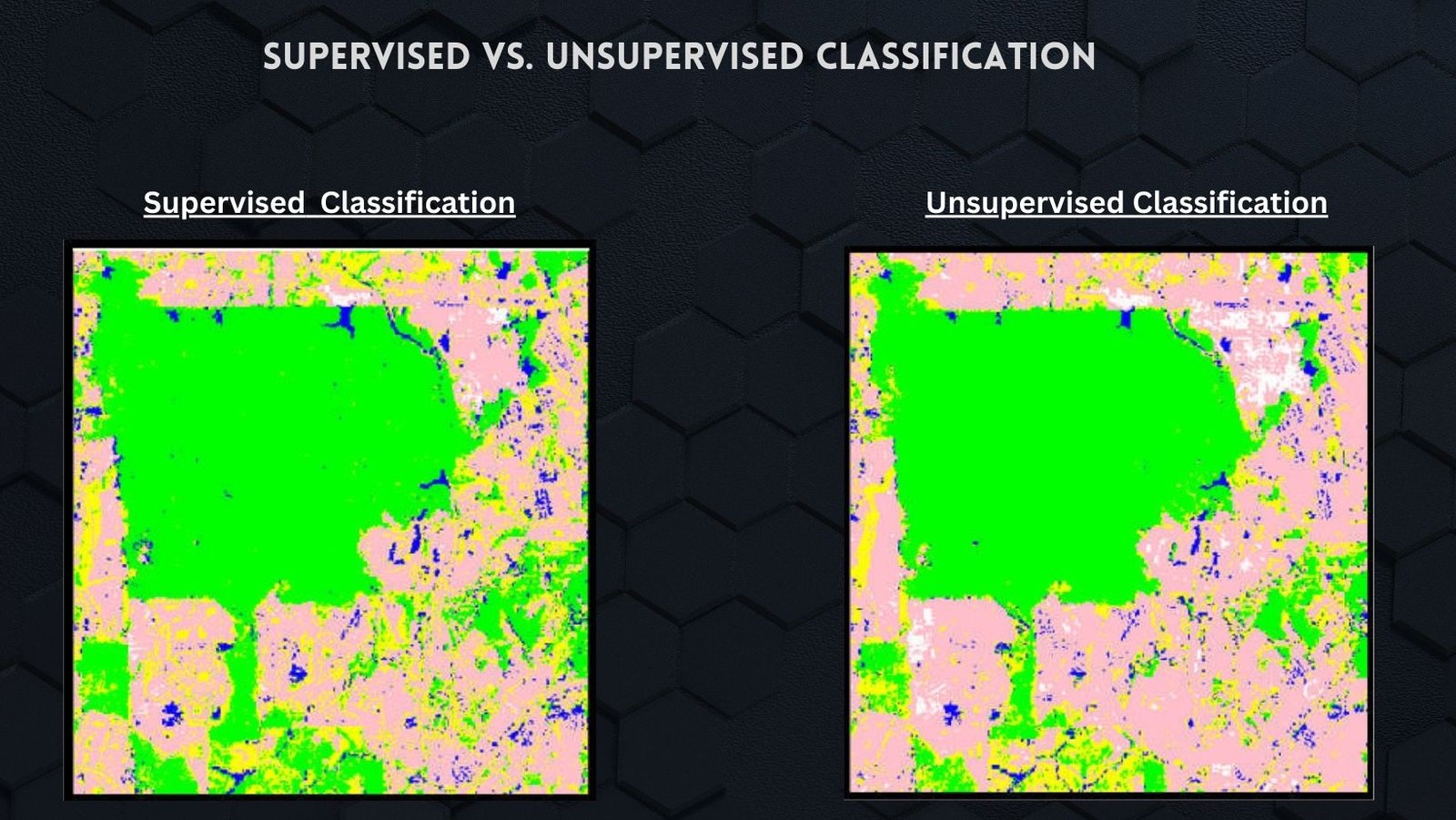Supervised and unsupervised classification are two different approaches used in remote sensing and image analysis for classifying and categorizing pixels or objects within an image. Here’s a breakdown of the key differences between supervised and unsupervised classification:
Supervised Classification:
Training Data: In supervised classification, the user provides a set of pre-classified training samples to the classification algorithm. These training samples consist of representative pixels or objects with known class labels, which serve as references for the classification process.
User Guidance: Supervised classification requires the user’s input and knowledge to select appropriate training samples and assign class labels to them. The user typically identifies sample locations based on their understanding of the study area or utilizes ground truth data for accurate representation.
Algorithm Training: The classification algorithm uses the provided training samples to create a statistical model or decision rule. This model is then applied to classify the remaining pixels or objects in the image.
Accuracy Assessment: Since the user has control over the training samples and class labels, supervised classification allows for accuracy assessment by comparing the classified results to the known ground truth data. This assessment helps evaluate the reliability and accuracy of the classification output.
Class-Specific Information: Supervised classification allows for the inclusion of specific knowledge about the classes of interest, such as spectral signatures, texture, and spatial characteristics. This information can enhance the accuracy and interpretability of the classification results.
Unsupervised Classification:
Absence of Training Samples: Unsupervised classification does not require prior knowledge or training samples from the user. Instead, it automatically identifies and groups pixels or objects in the image based on inherent similarities in their spectral characteristics.
Algorithm-Based Clustering: Unsupervised classification relies on clustering algorithms to group pixels or objects with similar spectral properties. These algorithms assign pixels to clusters or classes without any prior knowledge of their true identities.
Data Exploration: Unsupervised classification is often used as an exploratory tool to identify patterns or groupings within an image. It can help reveal hidden structures or unknown classes that may not be initially apparent to the user.
Class Labeling: Unlike supervised classification, unsupervised classification does not assign specific class labels to the resulting clusters. Instead, the user needs to interpret and assign meaningful labels to the identified clusters based on their knowledge of the study area or additional information.
Subjectivity: Unsupervised classification involves a higher degree of subjectivity in the interpretation and labeling of the clusters. The user’s expertise and understanding of the study area play a crucial role in assigning appropriate class labels.
In summary, supervised classification relies on user-provided training samples and known class labels, allowing for greater control and accuracy assessment. Unsupervised classification, on the other hand, automatically groups pixels or objects based on spectral similarities without prior knowledge or training samples, making it useful for exploratory analysis and identifying unknown patterns.

